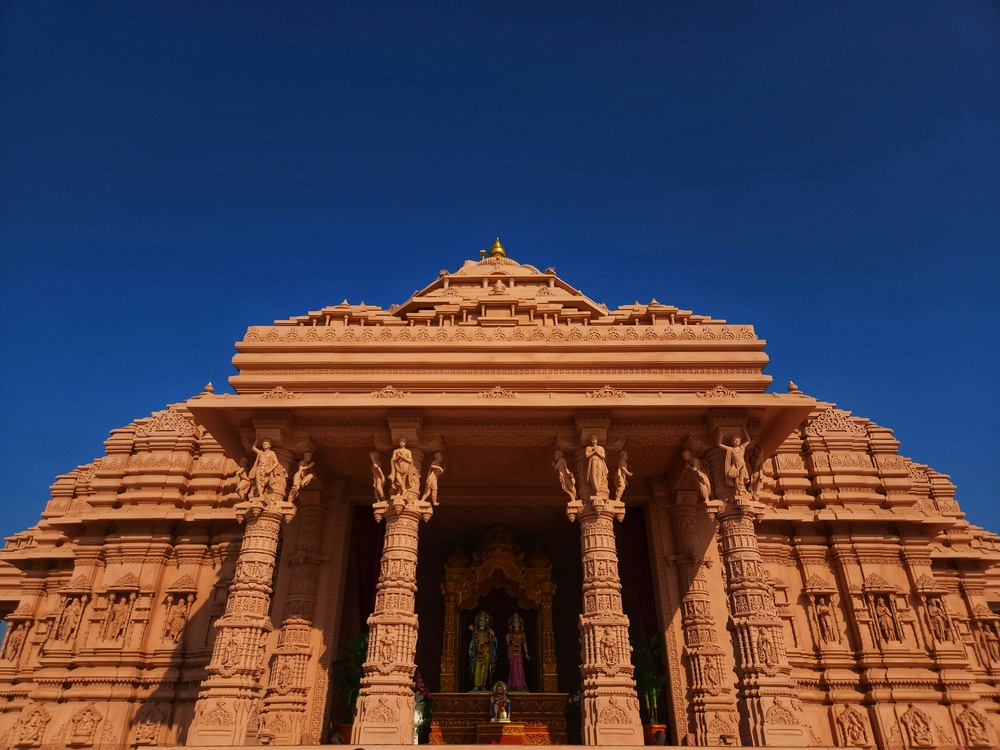Ayodhya, the ancient city on the banks of the sacred Sarayu River in Uttar Pradesh, is a timeless destination that embodies spirituality, mythology, and history. Revered as the birthplace of Lord Rama, this holy city attracts pilgrims, spiritual seekers, and cultural travellers from across India and the world. If you are planning a visit, here is a detailed guide to the best Ayodhya visiting places to explore its temples, ghats, and heritage sites for an unforgettable experience.
1. Ram Janmabhoomi
At the heart of Ayodhya lies Ram Janmabhoomi, believed to be the exact birthplace of Lord Rama. The grand Ram Temple, which is under rapid construction with its first phase already inaugurated, stands as a powerful symbol of faith, cultural pride, and devotion. Pilgrims from all over India visit to offer prayers and witness the architectural beauty that combines modern grandeur with traditional design.
2. Hanuman Garhi
Just 1 km from Ram Janmabhoomi is Hanuman Garhi, a prominent temple dedicated to Lord Hanuman. Perched atop a hillock with 76 steps, it houses a deity of Hanuman holding baby Rama. It is believed that Lord Hanuman protects Ayodhya from evil, and visiting Hanuman Garhi before Ram Janmabhoomi is considered auspicious. The temple also offers panoramic views of the city.
3. Kanak Bhawan
Kanak Bhawan, located near Hanuman Garhi, is a beautiful temple dedicated to Lord Rama and Goddess Sita. According to legend, it was gifted to Sita by Kaikeyi after her marriage. The richly adorned idols of Rama and Sita wearing golden crowns captivate devotees, making it one of the most divine Ayodhya visiting places for spiritual bliss.
4. Sita Ki Rasoi
Located near Ram Janmabhoomi, Sita Ki Rasoi is a temple with a symbolic kitchen believed to be used by Goddess Sita. It houses ancient kitchen utensils and showcases the domestic life of Sita, representing simplicity, devotion, and grace. Many visitors offer grains and food items here as a symbolic gesture of gratitude.
5. Nageshwarnath Temple
This ancient Shiva temple was believed to have been built by Kush, son of Lord Rama. Legend says Kush lost his armlet while bathing in the Sarayu River, which was returned by a Nag-Kanya (serpent girl) who was a devotee of Shiva. To honour her, Kush built this temple. It is particularly significant during Shivratri, attracting devotees from across the state.
6. Guptar Ghat
Guptar Ghat is a serene and sacred ghat along the Sarayu River where Lord Rama is believed to have taken Jal Samadhi, leaving the earthly realm to return to Vaikuntha. The ghat has beautifully built steps leading to the river, temples nearby, and is a perfect place to attend the evening aarti, meditate, and enjoy the peaceful sunset views that reflect Ayodhya’s timeless serenity.
7. Mani Parvat
Mani Parvat is a small hillock with immense mythological importance. It is believed to be a part of the Sanjeevani mountain carried by Hanuman that fell here while flying back to revive Lakshmana. Today, the hill has a Buddhist stupa, a Shiv temple, and a shrine dedicated to Lord Hanuman. It also offers stunning panoramic views of Ayodhya city and the Sarayu River.
8. Dasrath Bhavan
Located in Ramkot, Dasrath Bhavan is believed to be the royal palace of King Dasrath, father of Lord Rama. It houses shrines dedicated to Rama, Sita, Lakshmana, and Bharat. The vibrant decorations, devotional chants, and daily rituals recreate the grandeur of Treta Yuga, offering visitors a glimpse into the royal life of Ayodhya’s legendary past.
9. Tulsi Smarak Bhawan
Tulsi Smarak Bhawan is dedicated to Goswami Tulsidas, the saint-poet who composed Ramcharitmanas. It houses a museum with manuscripts, Ramayana studies research centre, and an auditorium where Ramleela and cultural programmes are organised regularly. For literature lovers and those interested in the spiritual arts, this is among the most inspiring Ayodhya visiting places.
10. Ram ki Paidi
Ram ki Paidi is a series of ghats built along the banks of the Sarayu River. These ghats are beautifully constructed with broad steps and well-maintained surroundings, where devotees take a holy dip. In the evening, the ghats glow with diyas and lamps during the grand aarti, creating a mesmerising atmosphere of devotion and beauty. It is also the site where thousands of lamps are lit during Deepotsav, creating record-breaking displays that attract global attention.
Explore Ayodhya’s Heritage Beyond Temples and Ghats
Apart from these top sites, Ayodhya also offers:
- Jain Shrines: Including Digambar Jain Mandir marking the birth of the first Tirthankara, Rishabhdev.
- Ayodhya Research Centre: For those researching Indian mythology, history, and Ramayana traditions.
- Local Markets: For souvenirs, Ramayana literature, idols, and Ayodhya-themed handicrafts.
Conclusion
Ayodhya is not just a pilgrimage; it is an experience of India’s living heritage, devotion, and cultural pride. These Ayodhya visiting places, including ancient temples, peaceful ghats, and historic sites, weave a tapestry of faith and timeless beauty. Whether you seek blessings, wish to relive the Ramayana legends, or immerse yourself in spiritual peace, Ayodhya will leave you with memories that uplift your soul and deepen your understanding of India’s sacred traditions.



